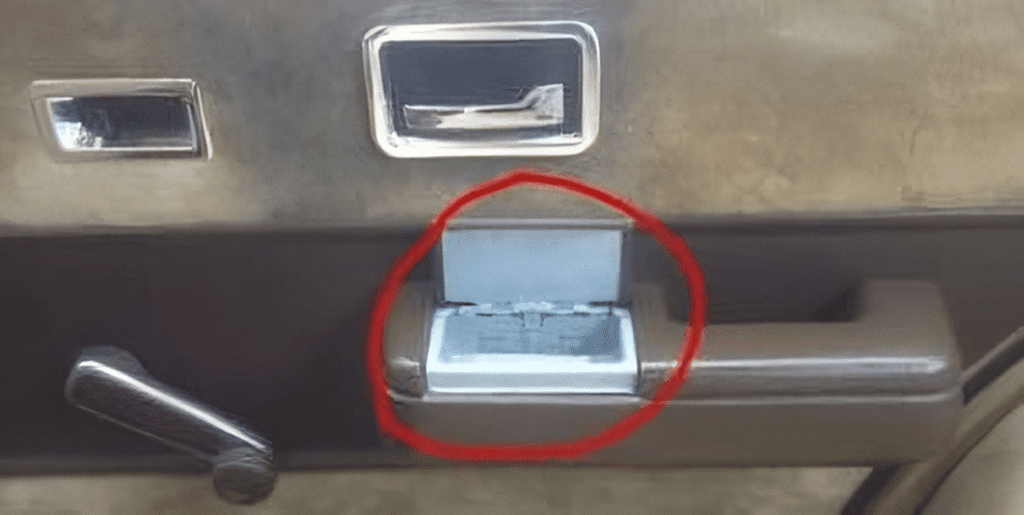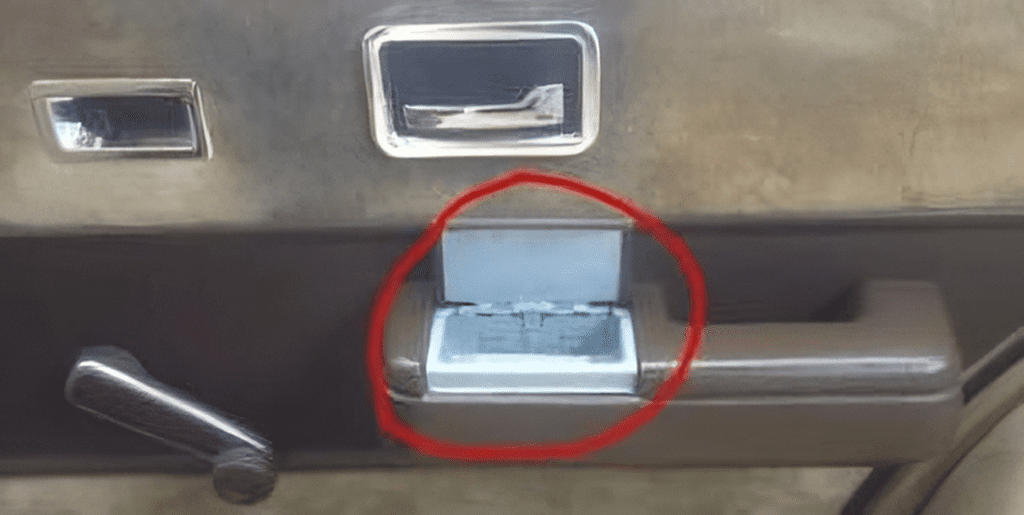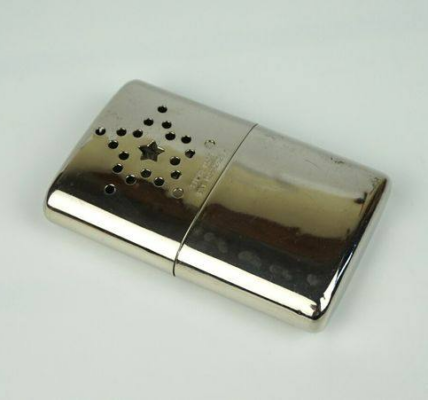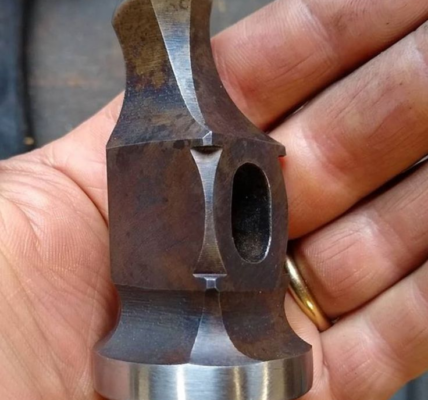If you can instantly recognize this mystery item, chances are you’re either a bit nostalgic or your car hails from an earlier era. Here’s a clue before you guess: this tiny feature became almost universal in cars by the 1950s but started disappearing in the late 1990s. Nowadays, it’s practically extinct in new vehicles, much to the chagrin of some drivers.
What is it? The humble built-in car ashtray. Once a standard feature in nearly every vehicle, the car ashtray has slowly disappeared, reflecting shifting social norms and advancements in automotive design. So why did automakers phase out this once-common feature, and what does its absence say about how our driving habits have evolved? Let’s dive into the history and significance of the car ashtray.
The Rise of the Built-In Car Ashtray

In the mid-20th century, smoking was widespread, and car manufacturers included ashtrays as a standard feature for drivers and passengers alike. As smoking was a common habit, having a built-in ashtray was not only convenient but expected. Typically located in the dashboard, door panels, or back seats, these ashtrays were designed to flip open, offering a designated spot for cigarette ash and butts.
By the 1950s, the car ashtray had cemented its place in automotive interiors. It was a standard feature that catered to a culture in which smoking was not only socially acceptable but considered a routine part of daily life. But as times changed, so did attitudes toward smoking—and by extension, the car ashtray.
Why Car Ashtrays Disappeared
So, what led to the gradual disappearance of the car ashtray? The reasons are many, spanning health concerns, changing consumer preferences, and advances in vehicle technology. Here are some key factors:
1. Health and Social Norms
One of the most significant drivers behind the decline of the car ashtray was growing awareness of the health risks associated with smoking. In the 1960s and beyond, medical research revealed the harmful effects of smoking on both smokers and those around them. This shift was bolstered by the Surgeon General’s warning labels, anti-smoking campaigns, and a broader push for smoke-free environments.
As public attitudes changed, the demand for built-in ashtrays in cars began to wane. Fewer people smoked, and those who did were increasingly discouraged from smoking in enclosed spaces like cars. Consequently, car manufacturers recognized that the ashtray was losing its relevance and started phasing it out.
2. Space for New Technologies
The evolution of car interiors has led to a greater focus on convenience, safety, and entertainment technology. Modern cars are packed with features that were unimaginable just a few decades ago, from touch-screen navigation systems to climate control, Bluetooth connectivity, and automated driver-assistance systems.
To make room for these advancements, manufacturers looked to eliminate features that no longer held widespread appeal. The ashtray was a prime candidate for removal, as automakers found that replacing it with controls for electric windows, cup holders, and other features appealed to a larger demographic.
3. Environmental Concerns
With the rise of eco-consciousness, smoking inside a vehicle has come under scrutiny, not only for health reasons but also due to its impact on the environment. Cigarette butts are a major contributor to litter and pollution, and vehicles with ashtrays could encourage drivers to smoke and dispose of their butts improperly. By removing ashtrays, car manufacturers signaled their support for a cleaner environment and discouraged smoking within the confined space of a car.
4. The Smoker’s Package Alternative
While most new vehicles no longer come with built-in ashtrays, some manufacturers still offer an option for those who smoke. Known as the “smoker’s package,” this add-on usually includes a portable ashtray that fits into a cup holder, along with a cigarette lighter. This allows drivers to have a designated space for ash without necessitating a permanent ashtray, and it caters to the small group of smokers without detracting from the design of the vehicle’s interior.
What Replaced the Ashtray in Modern Cars?

As the ashtray made its exit, other features took its place. Modern cars emphasize convenience and connectivity, with additional USB ports, larger cup holders, and improved storage spaces. In many cases, the slot once reserved for an ashtray is now home to controls for air conditioning, infotainment systems, or extra storage compartments.
Today’s car interiors reflect a lifestyle focused on comfort, safety, and technology. Instead of accommodating smoking, cars now prioritize features that make driving safer and more enjoyable, catering to the preferences of today’s drivers.
Why Some Drivers Miss the Classic Ashtray
Despite the changing times, some drivers feel nostalgic for the built-in ashtray. For many, it’s a reminder of an era when cars had simpler interiors, and the smell of cigarette smoke was as much a part of the driving experience as the hum of the engine. The ashtray’s disappearance also symbolizes a shift in cultural norms and a reminder of how far we’ve come in terms of health and environmental awareness.
For those who still enjoy smoking, the portable cup-holder ashtray isn’t quite the same as the old flip-top model. The built-in ashtray offered a level of convenience and style that the portable versions lack, and its absence serves as a subtle reminder of the sacrifices made for modern design.
The Car Ashtray: A Symbol of Changing Times
The decline of the car ashtray is a small but significant change that reflects broader societal shifts. What was once a ubiquitous feature in nearly every vehicle is now a relic of the past, pushed out by advancing technology, changing social norms, and a collective focus on health and environmental responsibility.
In many ways, the ashtray serves as a symbol of the evolving automotive industry and our cultural journey. It tells the story of how cars have transformed from simple means of transportation to sophisticated, technology-driven machines designed for a healthier, more sustainable future.
Conclusion: Farewell to the Car Ashtray, Hello to Modern Innovation
The disappearance of the built-in car ashtray marks the end of an era. It’s a small detail that many drivers once took for granted, but its absence highlights how much cars—and the way we interact with them—have changed over the decades. As we move forward, vehicles will continue to reflect our values, adapting to new technologies and societal shifts.
So, the next time you get into a car and find yourself searching for an ashtray, take a moment to appreciate the ways our driving experience has evolved. While the car ashtray may be gone, its legacy lives on in the memories of those who remember it, and in the constant innovation that keeps pushing the automotive industry forward.




